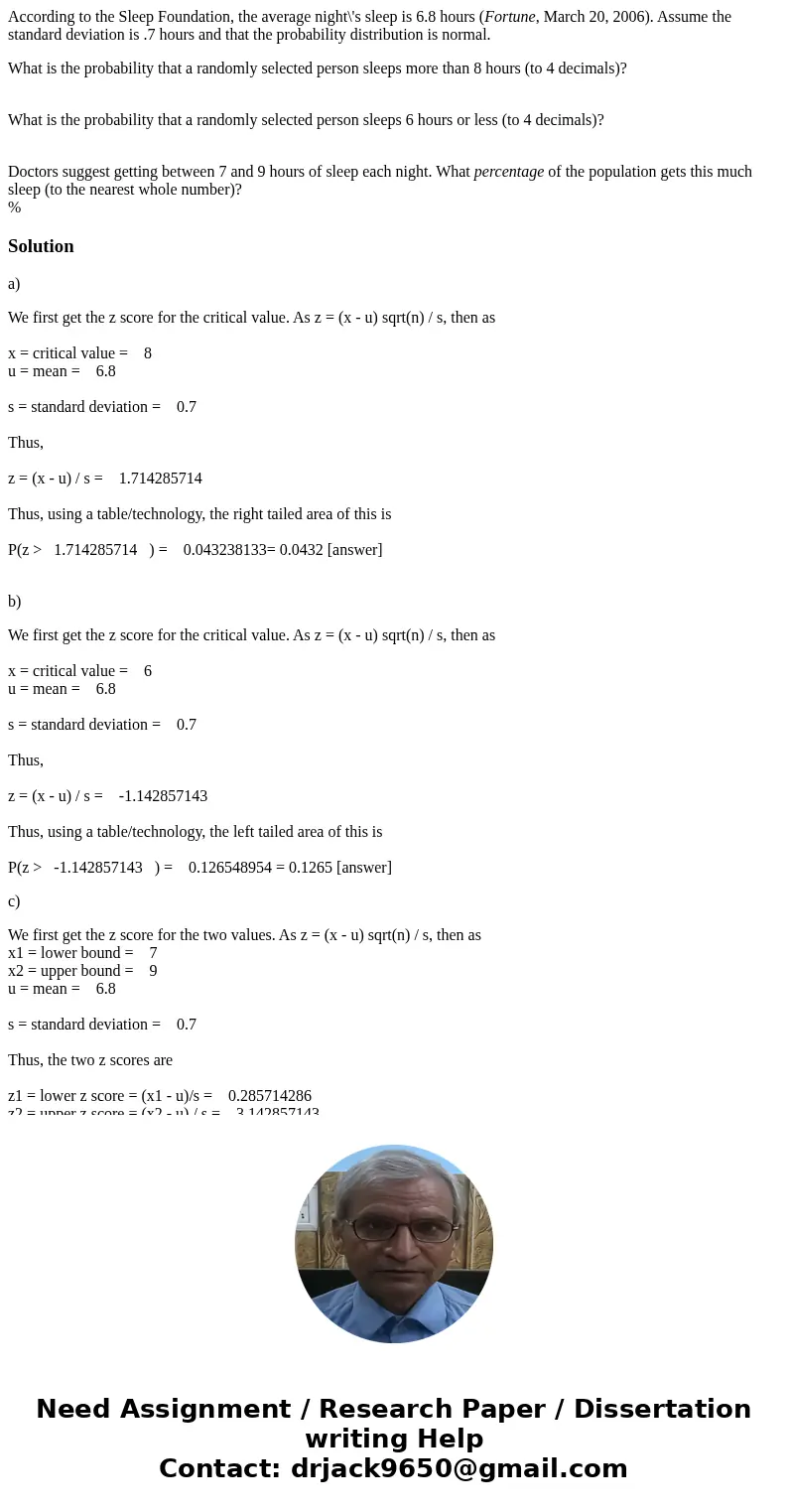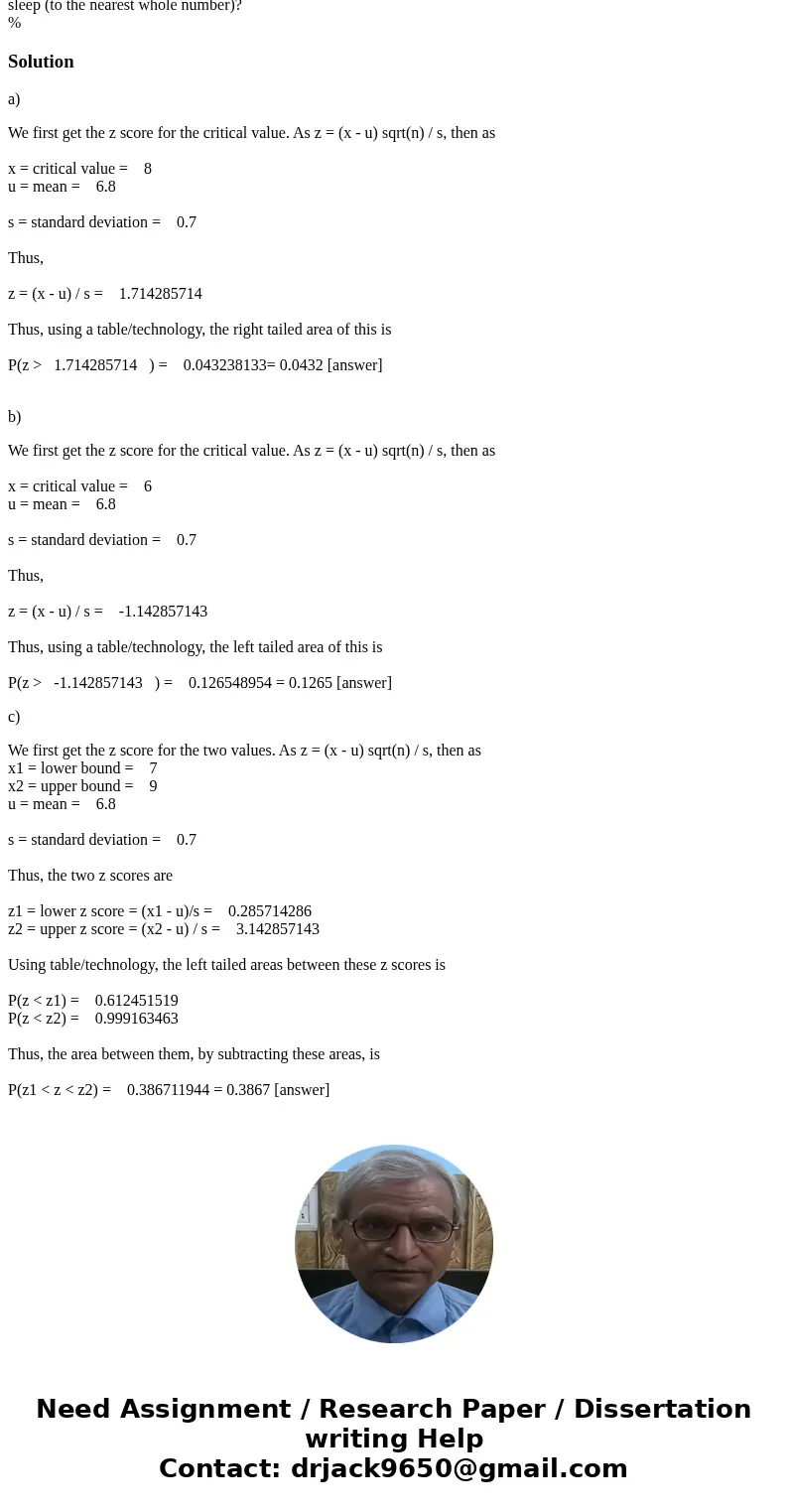According to the Sleep Foundation the average nights sleep i
According to the Sleep Foundation, the average night\'s sleep is 6.8 hours (Fortune, March 20, 2006). Assume the standard deviation is .7 hours and that the probability distribution is normal.
What is the probability that a randomly selected person sleeps more than 8 hours (to 4 decimals)?
What is the probability that a randomly selected person sleeps 6 hours or less (to 4 decimals)?
Doctors suggest getting between 7 and 9 hours of sleep each night. What percentage of the population gets this much sleep (to the nearest whole number)?
%
Solution
a)
We first get the z score for the critical value. As z = (x - u) sqrt(n) / s, then as
x = critical value = 8
u = mean = 6.8
s = standard deviation = 0.7
Thus,
z = (x - u) / s = 1.714285714
Thus, using a table/technology, the right tailed area of this is
P(z > 1.714285714 ) = 0.043238133= 0.0432 [answer]
b)
We first get the z score for the critical value. As z = (x - u) sqrt(n) / s, then as
x = critical value = 6
u = mean = 6.8
s = standard deviation = 0.7
Thus,
z = (x - u) / s = -1.142857143
Thus, using a table/technology, the left tailed area of this is
P(z > -1.142857143 ) = 0.126548954 = 0.1265 [answer]
c)
We first get the z score for the two values. As z = (x - u) sqrt(n) / s, then as
x1 = lower bound = 7
x2 = upper bound = 9
u = mean = 6.8
s = standard deviation = 0.7
Thus, the two z scores are
z1 = lower z score = (x1 - u)/s = 0.285714286
z2 = upper z score = (x2 - u) / s = 3.142857143
Using table/technology, the left tailed areas between these z scores is
P(z < z1) = 0.612451519
P(z < z2) = 0.999163463
Thus, the area between them, by subtracting these areas, is
P(z1 < z < z2) = 0.386711944 = 0.3867 [answer]


 Homework Sourse
Homework Sourse